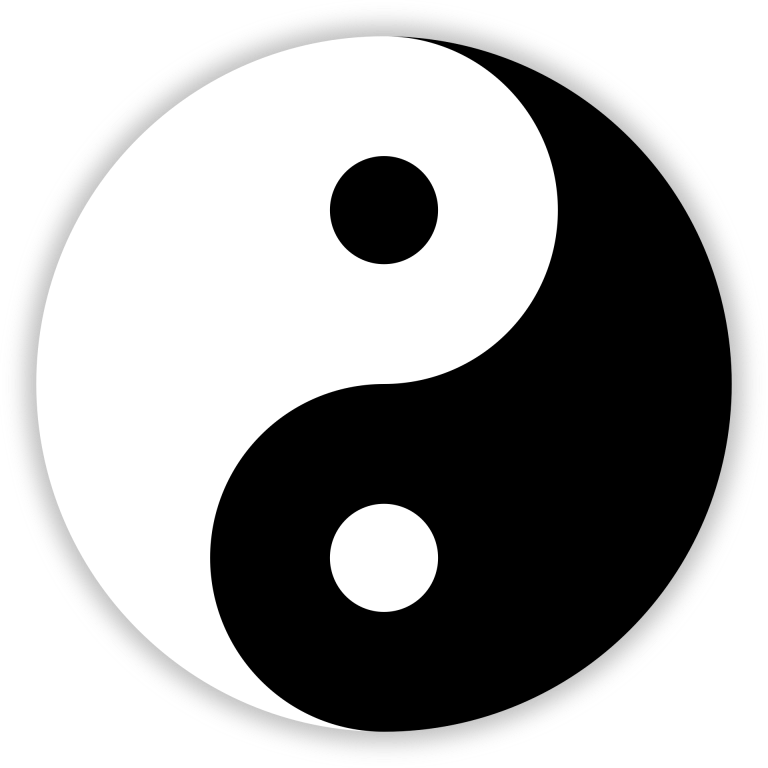The Tao That Cannot Be Spoken
To prevent being ripped apart by polarity, we must embrace that which cannot be contained.
Behold the taijitu. One would be hard pressed to find a more recognizable symbol on this planet. It is the mysterious mirrored circular swirl of darkness and of light. It is the symbol of the Tao and of yin and yang. To my mind, it is the most elegant and true symbol humanity has so far divined.
It's written in the first section of the Tao Te Ching that "the Tao that can be spoken of is not the eternal Tao." We can understand "Tao" as "the way of things." So in other words, the claim is that the nature of reality is impossible to speak to and convey completely.
So the Tao cannot be spoken; can it be sung? It cannot be spoken, but can it be heard? It can't be explained, but it is the case that, to some degree, it can be intuited.
Think of the way the periphery of your eyesight is simultaneously more aware and more obscured than your straight-ahead vision. This is the lens through which to view the Tao. It can't be understood with the logical mind; it must be felt—in the same feeling center as love and epiphany. And it is just as slippery, and even more so.
The Tao cannot be conveyed conceptually—except by means of this symbol, which is both below and beyond language.
As a garden of wisdom, the taijitu is infinitely fertile. It rewards deep inquiry with a bounty of lessons for life. Let’s examine some of what this symbol can teach us:
The swirl of the symbol speaks to the flux inherent in the cosmos. Being is always becoming. In the words of Heraclitus, "All flows, nothing abides."
The contrast of yin (receptivity) and yang (activity) speaks to the duality inherent in all things. It honors the value of logic.
The embedded circle within each opposite-color swirl speaks to the transcendence of duality. It presents the truth of coniunctio oppositorum, the unity of opposites—that what is is the same as what's not. It honors the limits of logic.
The circular container speaks to a lack of hard edges, of wu wei—that nothing need be forced.
This symbol beckons us to harmony. There a exists a place where tensions hold things in their proper place rather than grind us agonizingly down. The taijitu promises not only that harmony is really available, but that our natural home can be found there.
We hear much said of the religio-political polarization that grips our culture. In a real sense, that polarization has been tugging at the seams of the collective enterprise that is society, which have become loosed and frayed by the constancy of that tug.
The dangers of this polarization, mediated by the reality-tunneling effect of ideological possession, remain to be fully revealed. Many of the obvious effects—the continually-rising tensions and animosities between ideological camps, the erosion of access to objective truth, the dissolution of families and friendships over ideological stances—have become accepted as “how things are,” and not as existential issues demanding resolution.
The taijitu in its totality informs us that understanding reality (philosophically and pragmatically) requires being able to hold the tension of opposites generated in contradiction. If we become too hard-line, we lose the ability to intuit the way of things. We thereby become unable to position ourselves in accordance with the Tao, and rather than being carried with the wave onto the soft sand, we get barreled over by it.
Rigid adherence to ideological structures creates the conditions for polarization to propagate wildly like an invasive species of flora. It is a story as old as culture itself. “All flows” is the truth of the cosmic situation; therefore any simulacrum of rigidity is doomed to collapse. In a healthy society, poles should be seen as reference points, not as places to hang the one true flag.
If we are to navigate this fragile moment with deftness and grace such that we emerge from the other side intact, we must eschew rigid certainty for humble subtlety. The taijitu is the most direct symbol that holds this particular, fundamental, “capital T” Truth within its elegant design: Every thing both is and is not what it is and what it is not.
This truth is more than a paradox; it is the essence of paradox itself. In the face of such paradox, ideological certainty is obliterated. Rigid structures cannot stand when their foundations are built on shifting sands. The only sane response to such a truth is the profound embrace of humility. The likely outcome of a humble world is a unity of spirit beyond what we can currently imagine.
Behold the taijitu, and the truth to which it points like a finger toward the moon. There can we find harmony. There will we find home.



